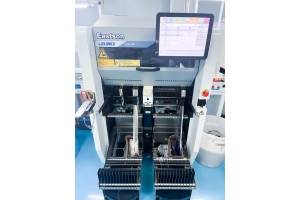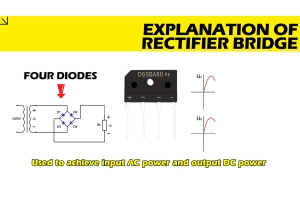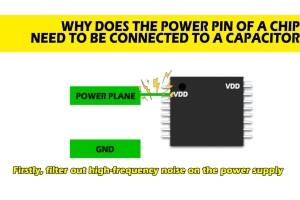Whether you're an aspiring engineer eager to master voltage regulation or simply curious about how your gadgets stay powered, this comprehensive guide is here to shed light on the fascinating world of voltage regulators.
In this journey, we'll explore the inner workings of voltage regulators, uncover their significance, and understand the critical tasks they perform. We'll delve into the different types of voltage regulators, each offering unique advantages and finding applications in various electronic systems. So, let's dive in!
What is a Voltage Regulator?
A voltage regulator is an essential electronic component used to keep a consistent output voltage in electrical systems. Its main purpose is to ensure that the voltage supplied to different devices remains stable, regardless of changes in the input voltage or the load conditions. Essentially, it acts as a protector, guarding delicate electronic components against potential damage caused by voltage fluctuations.
The significance of voltage regulators lies in their ability to provide a steady and accurate voltage supply to electronic devices, ranging from small gadgets to complex computer systems. These devices are designed to work efficiently within specific voltage ranges. Going beyond or below these optimal levels can lead to issues like erratic behavior, overheating, or even permanent damage, which ultimately shortens the equipment's lifespan.
In the real world, power sources can vary in voltage due to factors like changes in demand, line losses, or external disturbances such as lightning strikes. Voltage regulators act as intermediaries between the power source and the devices, constantly monitoring the input voltage and making adjustments to maintain a stable and desirable output level.
Types of Voltage Regulators
Let’s explore the common types of voltage regulators, their operational principles, and potential pros and cons.
Linear Voltage Regulators
Linear voltage regulators are commonly used due to their simplicity and widespread applications. They employ a series pass transistor to regulate the output voltage smoothly. There are two primary types of linear voltage regulators:
Series Regulator
This type uses a variable resistance in series with the load to maintain a constant voltage drop across it. By adjusting the resistance, the regulator ensures a stable output voltage despite variations in input voltage and load conditions.
Series regulators are straightforward and reliable, making them suitable for low to medium power applications.
Shunt Regulator
Unlike the series regulator, a shunt regulator uses a variable resistance in parallel with the load to divert excess current away, thus maintaining a constant voltage across the load.
These regulators are useful for applications where the load current may vary significantly, providing an effective means of voltage regulation.
Switching Voltage Regulators
Switching voltage regulators are known for their high efficiency, making them ideal for high-power applications. They operate by rapidly switching the input voltage on and off, storing energy in an inductor or capacitor, and then converting it to the desired output voltage.
There are two primary types of switching voltage regulators:
Buck Regulator
The buck regulator steps down the input voltage to produce a lower output voltage. It accomplishes this by switching the input voltage to the load for a fraction of the time, resulting in an average output voltage lower than the input.
They are widely used in applications where energy efficiency is crucial, such as battery-powered devices.
Boost Regulator
The boost regulator steps up the input voltage to produce a higher output voltage. It stores energy during the "off" cycle and releases it to the load during the "on" cycle, resulting in an average output voltage higher than the input.
These regulators are valuable in applications where the input voltage may drop below the required level, such as in LED drivers or some battery charging scenarios.
Working of Voltage Regulators
Linear Voltage Regulators
Linear voltage regulators work by dissipating excess voltage as heat. They consist of a pass transistor that regulates the output voltage by adjusting its resistance based on the input voltage and load requirements.
The key components of a linear regulator are the reference voltage, error amplifier, pass transistor, and feedback loop.
The process begins with a stable reference voltage, often generated using bandgap voltage references or Zener diodes. The error amplifier compares the reference voltage with the feedback voltage, which is derived from the output voltage through a voltage divider network.
Any difference between the reference and feedback voltage causes the error amplifier to adjust the pass transistor's resistance, ensuring the output voltage remains constant.
Linear regulators offer several advantages, such as low output voltage noise and simplicity of design. However, their main limitation lies in their low efficiency. Since excess voltage is dissipated as heat, the efficiency decreases as the input-output voltage difference increases. This makes them less suitable for applications where power dissipation is a concern.
Switch-Mode Voltage Regulators
Switch-mode voltage regulators, also known as switching regulators, utilize a different operating principle to regulate the output voltage. They achieve high efficiency by rapidly switching the input voltage on and off and then filtering it to obtain the desired output voltage.
The main components of a switch-mode regulator include a power switch, inductor, diode, and capacitor.
During the "on" state, the power switch (usually a transistor) connects the input voltage to the inductor, allowing current to build up in the inductor. Once the current reaches a certain level, the power switch enters the "off" state, disconnecting the input voltage. The inductor's energy is then transferred to the output through the diode and stored in the output capacitor, maintaining a continuous and stable output voltage.
Switch-mode regulators offer significant advantages over linear regulators, especially in high-power and battery-operated devices. Their efficiency is much higher as they minimize power dissipation, resulting in extended battery life and reduced heat generation.
However, the switching process can introduce output voltage ripple and electromagnetic interference, requiring careful filtering and layout considerations.
Applications of Voltage Regulator
Voltage regulators find applications in a wide array of industries and technologies. Their ability to maintain a stable output voltage makes them crucial for the proper functioning and protection of electronic devices and systems.
Let's explore some key applications of voltage regulators:
Power Supply Units
Voltage regulators are extensively used in power supply units to ensure a steady and reliable output voltage. They protect sensitive electronic devices from voltage fluctuations, preventing potential damage and ensuring optimal performance.
PSUs with voltage regulators are found in computers, servers, consumer electronics, and industrial equipment.
Automotive Electronics
Modern vehicles utilize voltage regulators to manage the voltage output of the alternator or generator. These regulators help maintain a stable voltage level to power various electronic components, such as engine control units (ECUs), infotainment systems, and lighting systems.
Battery Charging Systems
Voltage regulators are essential components in battery charging systems, ensuring that batteries receive the correct charging voltage. They prevent overcharging, which can damage batteries, and protect against undercharging, which could lead to reduced battery life.
Applications include smartphones, laptops, electric vehicles, and renewable energy systems.
Aerospace and Avionics
In the aerospace industry, voltage regulators are used to provide consistent power to critical avionics equipment, including flight control systems, communication devices, and navigation instruments.
Industrial Automation
Voltage regulators are used in industrial automation to regulate the voltage supplied to machinery and control systems. This helps prevent voltage fluctuations from disrupting manufacturing processes and safeguarding sensitive electronic components.
Telecommunications
Telecommunication systems rely on voltage regulators to stabilize the voltage supplied to networking equipment, such as routers, switches, and base stations. Consistent power ensures uninterrupted communication services and helps protect networking hardware from voltage-related failures.
Medical Devices
Voltage regulators are used in medical devices like ultrasound machines, patient monitors, and diagnostic equipment to ensure a constant power supply, minimizing the risk of errors due to voltage fluctuations.
Renewable Energy Systems
In solar and wind energy systems, voltage regulators play a crucial role in managing the fluctuating output voltage from renewable energy sources. They stabilize the voltage to match the requirements of the connected grid or battery storage systems, maximizing the efficiency and reliability of the renewable energy installation.
Audio and Video Electronics
In audio amplifiers, voltage regulators maintain a stable power supply for high-fidelity sound reproduction and prevent audio distortions caused by voltage variations. Similarly, video display systems benefit from voltage regulators to ensure consistent and flicker-free display performance.
Mobile Electronics
Portable devices like smartphones, tablets, and wearable gadgets rely on voltage regulators to regulate battery power efficiently. They maintain a steady voltage for the internal circuitry and peripherals, enhancing battery life and overall device performance.
Voltage Regulator Control Techniques
Voltage regulator control techniques are crucial for maintaining stable output voltage levels in electronic systems. By employing following control strategies, we can optimize system performance to ensure reliability and efficiency.
Feedback Control Loop
Both linear and switching regulators use feedback control loops to maintain a stable output voltage. The feedback loop continuously monitors the output voltage and compares it to a reference voltage. If the output voltage deviates from the reference, the control circuit adjusts the pass element's operation to bring the output back to the desired level.
This closed-loop control system ensures that changes in input voltage, load current, and temperature do not significantly affect the output voltage, providing a robust and reliable voltage regulation.
Proportional-Integral-Derivative (PID) Control
PID control is a widely used technique in voltage regulation. It combines three components: Proportional (P), Integral (I), and Derivative (D) control. The proportional term responds to the current error between the desired and actual output voltages, the integral term accumulates the past errors to eliminate steady-state errors, and the derivative term anticipates future errors by evaluating the rate of change of the error.
PID controllers are highly versatile and can be tuned to provide stable and responsive regulation in various systems.
Digital Control
With the advancement in digital signal processing and microcontroller technologies, digital control techniques have gained popularity. Digital controllers can implement complex control algorithms with greater precision, offering features such as remote monitoring, adaptive control, and fault protection.
Digital control also allows for easy implementation of advanced control strategies, making it well-suited for modern power management systems.
Feedforward Control
Feedforward control is a technique used in combination with feedback control to enhance voltage regulation performance. It predicts disturbances or changes in the system and compensates for them before they can affect the output voltage.
By preemptively adjusting the control signals based on known disturbances, feedforward control reduces the need for corrective action by the feedback loop, improving overall system response time and stability.
Droop Control
Droop control is commonly used in parallel-connected voltage regulators, such as in power distribution systems or multi-phase voltage regulators. Rather than maintaining a fixed output voltage, each regulator is designed to allow a small voltage drop as the load current increases.
This way, the load is shared more evenly among the regulators, promoting load balancing and enhancing the stability of the system.
Design Considerations for Voltage Regulators
When designing a voltage regulator, several key considerations must be taken into account to meet specific application requirements. Let's explore these in a bit detail.
Voltage Regulation Requirements
Before designing a voltage regulator, it is crucial to clearly define the requirements for the output voltage. Determine the desired output voltage level and the tolerances or variations allowed. Consider the load conditions and any transient events that may affect the output voltage stability.
Type of Voltage Regulator
Select the appropriate type of voltage regulator based on your application's specific needs. You may refer to earlier sections to learn pros and cons and applicability of various types of voltage regulators.
Efficiency and Power Dissipation
Efficiency is a critical factor to consider, especially when designing battery-operated devices or energy-conscious systems. Lower power dissipation translates to less heat generation, increasing the overall reliability and lifespan of the voltage regulator.
Transient Response
Transient response indicates how quickly the voltage regulator can recover from sudden changes in load current or input voltage. Fast transient response is important to avoid voltage fluctuations that could impact sensitive electronic components.
Noise and Ripple Rejection
Voltage regulators should provide adequate noise and ripple rejection to prevent unwanted disturbances from affecting the output voltage. This becomes particularly crucial in precision analog circuits or audio applications.
Protection Mechanisms
Incorporate protection features such as overcurrent protection (OCP), overvoltage protection (OVP), and thermal shutdown to safeguard both the regulator and the connected components from potential failures or damage.
Stability and Compensation
Ensuring stability is essential for the proper operation of a voltage regulator. Design the feedback loop with appropriate compensation components to prevent oscillations or instability under various load conditions.
Component Selection
Carefully choose the passive and active components used in the voltage regulator circuit. The selection of suitable transistors, diodes, capacitors, and resistors directly impacts the regulator's performance and efficiency.
Heat Dissipation and Cooling
Evaluate the heat dissipation requirements for your voltage regulator, especially for higher-power applications. Consider proper heat sinking or cooling solutions to maintain the regulator within safe operating temperatures.
Package and Size Constraints
Depending on the application, the physical size and package of the voltage regulator can be crucial. Choose a package that fits within the available space and meets any size restrictions.
Environmental Conditions
Consider the operating environment of the voltage regulator, including factors like temperature, humidity, and vibration. Ensuring the regulator's performance and reliability under these conditions is vital, especially for industrial or automotive applications.
Voltage Regulator Testing and Measurement
The primary goal of voltage regulator testing is to verify its functionality and determine if it meets the specified performance criteria. Testing ensures that the regulator operates within the desired voltage range, exhibits minimal output ripple, and responds appropriately to changing loads.
Let’s delve into the key aspects of voltage regulator testing and measurement, essential for guaranteeing their reliability in real-world applications.
Load Regulation Test
Load regulation measures the ability of a voltage regulator to maintain a stable output voltage when subjected to varying loads. During this test, the regulator is subjected to different loads while measuring the output voltage. The results help determine if the regulator maintains a consistent voltage level, even with fluctuating loads.
Line Regulation Test
Line regulation evaluates the voltage regulator's capability to maintain a constant output voltage when the input voltage changes. The regulator is subjected to varying input voltages, and the output voltage is measured. A good voltage regulator should exhibit minimal fluctuations in the output voltage during changes in the input voltage.
Output Voltage Accuracy
This test assesses how accurately the voltage regulator maintains the desired output voltage. The regulator's output voltage is compared to the specified voltage level, and any discrepancies are noted. Precision is crucial, especially in applications where sensitive electronic components require a precise voltage supply.
Transient Response Test
The transient response test measures the regulator's ability to recover quickly from sudden changes in load or input voltage. It simulates real-world scenarios where the load on the regulator changes rapidly. A voltage regulator with excellent transient response will recover quickly without experiencing significant voltage fluctuations.
Temperature Performance
Voltage regulators can be affected by temperature variations. Testing should include evaluating the regulator's performance under different temperature conditions, such as high and low temperature extremes. This helps ensure that the regulator remains stable and reliable across various operating environments.
Ripple and Noise Measurements
Ripple and noise on the output can negatively impact sensitive electronic circuits. Testing involves measuring the amount of unwanted AC voltage components present in the regulator's output. A good voltage regulator should exhibit low ripple and noise levels.
Overload and Short Circuit Protection:
Voltage regulators must have built-in protection mechanisms to prevent damage in case of overload or short circuits. Testing involves intentionally overloading the regulator and observing its response. It should shut down or limit the output current to protect itself and connected devices.
Efficiency Testing
Efficiency testing determines how well the regulator converts input voltage to the desired output voltage. It calculates the efficiency as the ratio of output power to input power. Higher efficiency is desirable as it reduces wasted energy and heat generation.
Aging and Longevity Tests
To ensure the voltage regulator's long-term reliability, it should undergo aging and longevity tests. These tests subject the regulator to extended operation under normal conditions to simulate its lifespan. The regulator's performance is periodically checked to assess any degradation over time.
Compliance with Standards
The testing process should also verify whether the voltage regulator complies with relevant industry standards and safety regulations. This is crucial, especially in applications where safety and performance are critical.
Troubleshooting Voltage Regulators
Like any electronic component, voltage regulators can encounter problems that may affect their performance. Let's delve into some specific problems and troubleshooting techniques to maintain a smooth operation:
Overheating
Voltage regulators can get excessively hot due to high ambient temperatures, inadequate heat sinking, or excessive current draw. This can lead to thermal shutdown or permanent damage.
- Troubleshooting: Ensure proper heat dissipation by using an appropriately sized heatsink and allowing for adequate ventilation. Reduce the load or consider a higher-rated regulator if the current draw is near the maximum limit.
Voltage Drops
Voltage regulators may experience voltage drops across them, especially in linear regulators. This drop can impact the output voltage and potentially cause malfunctions in connected devices.
- Troubleshooting: Choose a low-dropout (LDO) regulator if voltage drop is critical. Additionally, verify the input voltage to ensure it meets the minimum required for proper regulation.
Noise and Ripple
Voltage regulators may introduce noise or ripple on their output, leading to disturbances in sensitive circuits.
- Troubleshooting: Utilize bypass capacitors near the regulator's input and output pins to reduce noise and ripple. Opt for regulators with better ripple rejection characteristics.
Regulation Inaccuracy
Some voltage regulators may exhibit deviations from the desired output voltage, leading to incorrect operation of connected devices.
- Troubleshooting: Double-check the input voltage, load current, and the regulator's datasheet to ensure they align with the manufacturer's specifications. Consider using precision voltage references for critical applications.
Current Limiting and Short Circuits
If the load draws excessive current or there's a short circuit, the voltage regulator might activate its current limiting or short-circuit protection, leading to intermittent power supply.
- Troubleshooting: Examine the load's current requirements and ensure they are within the regulator's rated limits. Check for short circuits in the circuit and address them promptly.
Start-up and Shutdown Issues
Some voltage regulators may have difficulties during start-up or shutdown, causing voltage spikes or delays in reaching the stable output voltage.
- Troubleshooting: Review the regulator's datasheet for any specific start-up and shutdown requirements. Add soft-start or shutdown delay circuitry if necessary.
Aging and Degradation
Over time, voltage regulators can experience component aging and performance degradation, leading to a drift in output voltage and reduced efficiency.
- Troubleshooting: Regularly monitor the output voltage and performance of the regulator. Replace aging components if necessary or consider using components with extended lifetimes.
Electromagnetic Interference (EMI)
Some voltage regulators may generate electromagnetic interference, affecting nearby sensitive circuits or causing regulatory compliance issues.
- Troubleshooting: Use EMI filters and shield sensitive components. If possible, choose regulators with low EMI emissions or add additional filtering components.
Summing Up
In summary, voltage regulators play a pivotal role in diverse sectors, from automotive and telecommunications to renewable energy and medical devices. Their importance lies in maintaining steady voltage levels, ensuring seamless operation of electronic systems.
Mastering voltage regulators involves understanding their mechanisms, control methods, and design principles. With this knowledge, engineers and enthusiasts can confidently navigate the intricacies of voltage regulation.





